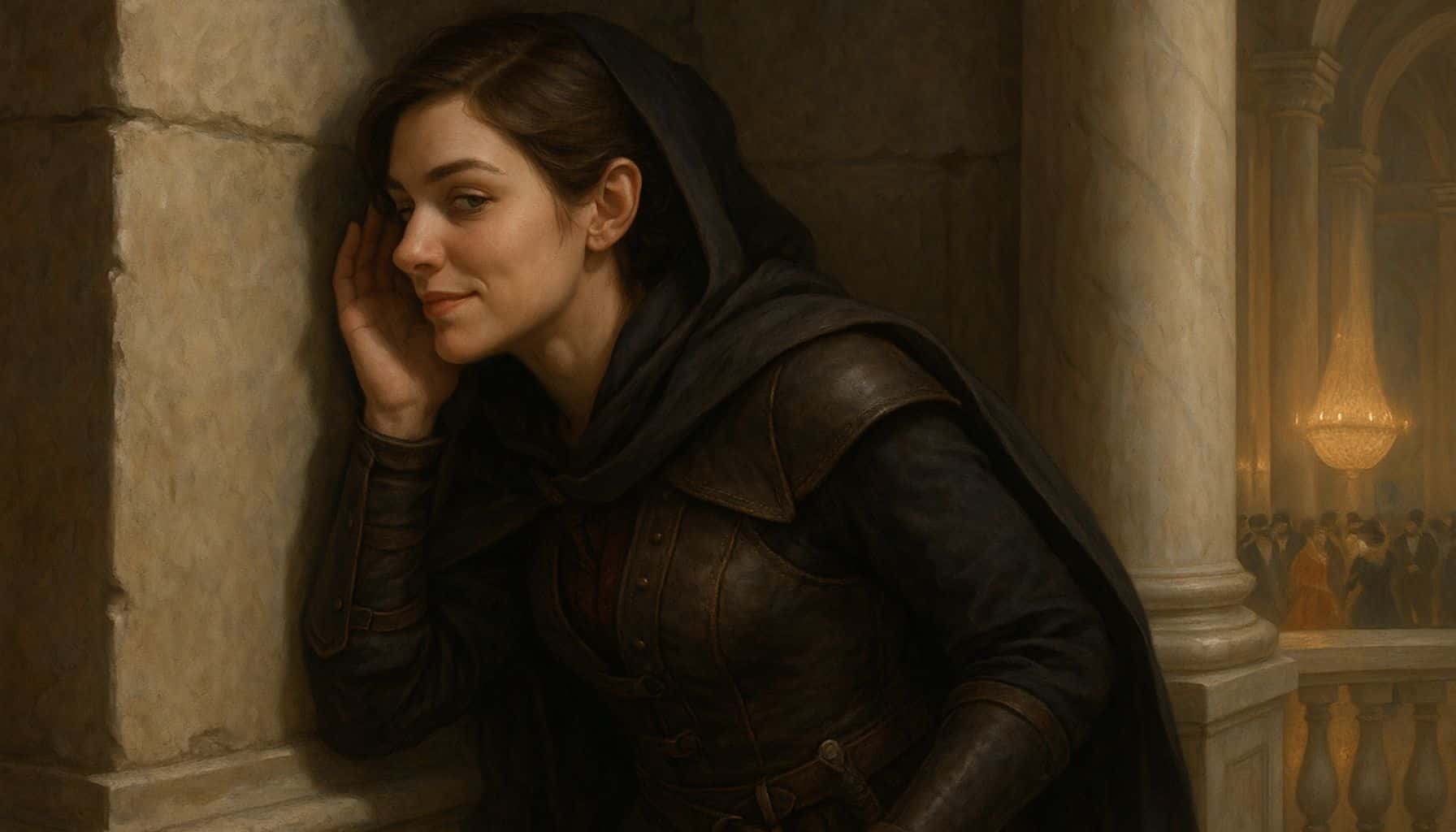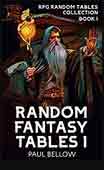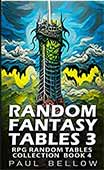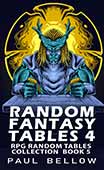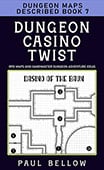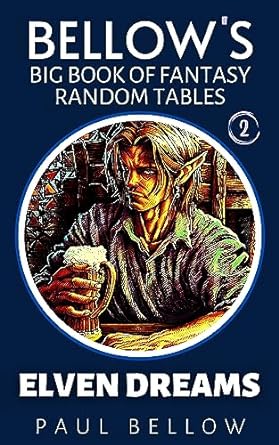Shadows slithered beside the adventurers as they pressed deeper into the lamp-lit labyrinth, every footstep echoing through memory and myth. Even before the dice tumbled, the table’s eyes always turned to the Rogue: would he steal the priest’s purse, desert his comrades, knife someone in the night? That narrow expectation (rogue as thief, as unpredictable loner) hung heavy over the class, shaping generation after generation of sly, smirking scoundrels. Yet beneath the hood, the archetype wore new faces, hearts beating with motives and ideals that rarely appeared in the stereotypes D&D fans passed down as gospel.
Players and Dungeon Masters traded in familiar currency: the glint of stolen coin, the roll of a lockpick, whispers of betrayal. Rogues became shorthand for chaos rarely earning the dry ink of a nuanced backstory or a seat at the table of heroes. Even seasoned adventurers pigeonholed these characters, their morality assumed to be mercurial, their talents reduced to a resume of stealth and trickery. The deeper truths of the class were often obscured by these assumptions, smothering opportunity for richer, more complex storytelling.
But turn away from the caricature, and the Rogue stands as a crucible for ambiguity and evolution. Rogues tease at the boundaries between social roles, dancing between danger and wit, with a toolkit that far surpasses silent footsteps and sharpened blades. They bring to the game table a rare, delicious flexibility, able to be masterminds as easily as martyrs, figures haunted by tragedy or galvanized by loyalty. To call them assassins or thieves alone cheats both the class and its players out of the full sweep of narrative and emotional range D&D places at their feet, especially when you use the right D&D backstory generator!
Too many players see their Rogues as disposable, interchangeable, destined to drift at the party’s edges. Some stick to the script: backstabber, saboteur, liar. Others forget the dots can be connected into intricate portraits of moral complexity, profound loyalty, or even upright justice. A Rogue may serve as the party’s conscience, its unsuspecting heart, the glue in a world set on fracture. Rarely does that opportunity step into the light when discussion flattens the class into trope and afterthought.
This examination aims to cleave through that fog and expose not just what Rogues can do, but all that they can become. The misunderstood archetype deserves dissection. Its potential stretches far beyond mere trickery or disloyalty, opening a gateway to stories where trust, identity, and skill create deeply textured heroes and antiheroes alike.
This article challenges the crust of tradition and offers a blueprint for writers, players, and Dungeon Masters hungry to tell stories that matter. In dissecting popular perceptions, historical context, and the astounding diversity already quietly embedded in the class, we invite you to peel back the mask and see the Rogue not as a stereotype, but as a figurehead for what the best Dungeons & Dragons can achieve: immersive, unpredictable, transcendent narrative play.
Try my AI Tabletop RPG generators...and an extensive library of content!
- Origins of the Rogue’s Misconceptions
- Breaking Down Rogue Archetypes
- Rogues as Story Drivers
- The Versatile Role of Rogues in Gameplay
- Reframing Morality: Rogues Beyond Alignment Constraints
- Role-Playing Complex Rogues
- Integrating Rogues Seamlessly Into Campaigns
- Rogue Synergies With Other Classes
- Rogues in Action: Stories from the Table
- Final Thoughts: Embracing the Rogue’s True Potential
Origins of the Rogue’s Misconceptions
Dungeons & Dragons as first conceived drew heavily from pulp fantasy, sword-and-sorcery adventures, and the archetypes of Hollywood’s golden age. The earliest Rogue, often called the Thief, emerged in the shadow of characters like Bilbo Baggins, the Gray Mouser, and Robin Hood, a confluence of cutpurse, acrobat, and noble outlaw. Mechanics shaped the myth: Sneak Attack encouraged visions of silent murder, while expertise in Stealth and Sleight of Hand spoke more to mischief than heroism. The rules codified an image: Rogues as creatures of opportunity and shadow, dancing between the cracks of lawful society.
As editions rolled on, names and subtleties shifted, but the bones remained: a class built around circumvention and subversion. Classic modules leaned on rogues for trap finding, lock picking, and scouting, rarely placing moral weight or dimension onto these actions. The narrative subtext pushed them to the margins, both narratively and socially.
Outside the rulebooks, the flames of stereotype flared brighter. Films, comics, and novels gleefully transposed D&D archetypes onto their most enduring scoundrels. Pop culture feasted on the vision of the Rogue as the party’s risk, the wildcard liable to sell out friends for a pouch of gold or an easy exit. Moral ambiguity bled into cynicism; loyalty became suspect; charm masked the expectation of inevitable betrayal.
These tropes calcified into a feedback loop: players, seeing only these possibilities in media and modules, leaned hard into them, reinforcing the notion with every smirk, every “I check for traps” uttered with ironic detachment. Soon even DMs defaulted to expectatory suspicion, rarely trusting a Rogue’s intentions. The result: a class maligned and misunderstood, its palette of narrative and emotional hues dulled by consensus.
⚔️ Fantasy RPG Random Tables Books
Make life as a Gamemaster easier…
If you play Dungeons & Dragons, Pathfinder, or other fantasy RPGs, this
RPG random tables series
is packed with encounters, NPCs, treasure, and more. Available in eBook or print—either way, you’ll have a wealth of adventure ideas at your fingertips.
Pop Culture Stereotypes Reinforcing Rogue Misconceptions
- Han Solo as the greedy, self-serving smuggler who betrays only to later redeem himself
- Artemis Entreri from R.A. Salvatore’s novels portrayed as the emotionless, ruthless assassin
- The Gray Mouser from Fritz Leiber’s stories embodying the roguish, chaotic mischief-maker
- Locke Lamora in The Lies of Locke Lamora playing the archetype of conman above all loyalty
- Garrett from the Thief video game series, whose motivations hover between cynicism and self-interest
- Felix from Fire Emblem: Three Houses, depicted as a cold, calculating swordsman with little allegiance
- Black Cat (Marvel Comics), a thief whose loyalty is perpetually uncertain
- The Joker in many Batman iterations as the ultimate chaotic saboteur, unbound by any morality
- Lando Calrissian, whose charm camouflages frequent betrayals
- LeChuck in the Monkey Island series, blending piracy with amorality and scheming
- Kaz Brekker from Six of Crows as the archetype of ruthless mastermind with dubious motives
- Cato from The Hunger Games, embodying lethal cunning without discernible loyalty
- Jack Sparrow in Pirates of the Caribbean, celebrated for duplicity and unpredictable alliances
- Jarlaxle from Forgotten Realms, the unpredictable drow with shifting allegiance
- Arya Stark in Game of Thrones thrumming with vengeance and moral ambiguity
- The Riddler in Batman media as a symbol of cleverness warped by self-interest
Players and Dungeon Masters step forward by confronting these origins. Unearthing the sources of these conceptions makes it possible to discard the scaffolding and explore the class on more dynamic, meaningful terms. Only once the roots of misunderstanding are exposed can the full flourishing of Rogue complexity truly begin.
Taking the time to recognize these well-trodden grooves in storytelling isn’t about shaming creativity, but expanding its field. With the veil lifted, new possibilities emerge for Rogues, ones painted in fresh shades, driven by motives unfamiliar, and shaped by choices that matter. It is only then that the Rogue’s soulful potential cracks open, ready for celebration and imagination.

Breaking Down Rogue Archetypes
Dungeons & Dragons splinters the Rogue into a gallery of archetypes, each with its own signature, each bursting with narrative possibility. Yet at most tables, these subtypes are reduced to familiar signifiers: the Thief pilfers purses, the Assassin hunkers in shadows, the Swashbuckler flourishes a blade with a wink. What slips past most is the fertile ground for reinvention, fields of narrative ripe for sowing stories beyond stereotype.
Thief, Assassin, Swashbuckler, Arcane Trickster, Mastermind, Scout, and Phantom: these names are invitations, not limitations. The Thief can lift spirits as much as jewelry, confronting poverty or seeking lost justice. Assassins may hunt monsters or dismantle tyrannies, carrying burdens of guilt or codes sharper than their daggers. Swashbucklers charm courtiers or infiltrate corrupt nobility, wielding wit as deftly as steel. Arcane Tricksters subvert the line between science and sorcery, dazzling courts or upending arcane hierarchies.
Beneath each mask, the bones of complexity shift. The Mastermind is as likely to lead as to lurk, an operator setting dominoes with patience seldom found in the brash stereotype. The Scout masters the wild, but loyalty to cause or kin can outweigh self-interest; their skills carry stories of survival and responsibility. The Phantom peers between worlds, haunted by memory, driven by redemption or consumed by empathy for the dead.
Each archetype provides a launchpad for unexpected, layered characterization. Imagine a Swashbuckler seeking absolution, or a Thief penitent for a fateful mistake. The Scout could be a reluctant leader, forced from solitude by crisis. The Arcane Trickster might use illusions to comfort, not deceive. There are no chains here, only stories waiting to be unearthed by players and storytellers with the curiosity to dig deeper.
When DMs and players move beyond the simple, they create Rogues who are not just skilled, but unforgettable. Each archetype, freed from ossified expectation, brings new narrative gravity to campaigns. Layer by layer, the Rogue’s collection of tricks transforms from mere mechanics to windows into identity, motivation, and meaning.
Rogue Archetype Complexity Table
| Archetype | Typical Misconceptions | Unexplored Narrative Potential | Unique Role-Playing Opportunities |
|---|---|---|---|
| Thief | Generic criminal, kleptomaniac | Champion of the poor, former victim of injustice | Symbolic Robin Hood, rekindling lost ideals |
| Assassin | Ruthless killer, devoid of emotion | Regretful vigilante, monster slayer | Exploring shame, atonement, or oaths of service |
| Swashbuckler | Flamboyant showboat, womanizer | Secret romantic, heroic duelist fighting injustice | Navigating love, honor, and public expectation |
| Arcane Trickster | Selfish prankster, irresponsible mage | Scholar challenging magical dogma | Struggling with forbidden knowledge or belonging |
| Mastermind | Manipulative chessmaster, puppetmaster | Reluctant leader or political reformer | Subtle negotiation, building alliances |
| Scout | Loner, survivalist, bland wilderness type | Exiled heir or revolutionary scout | Deep loyalty, environmental stewardship |
| Phantom | Goth caricature, obsessed with death | Empathic medium aiding restless spirits | Haunted by past wrongs, seeking posthumous justice |
| Soulknife | Inscrutable psychic, cold predator | Psychic healer, memory restorer | Wrestling with identity, defending the vulnerable |
| Inquisitive | Nosy busybody, conspiracy theorist | Truthseeker, whistleblower inside corrupt systems | Pursuing clues, testing loyalties, spotlighting secrets |
| Scout | Unfeeling tracker, sidekick | Lost child of the wild, defender of frontiers | Exploring belonging, community, and culture clash |
| Revived (Phantom) | Obsession with undeath, nihilism | Wrestles with existence, cultivates new empathy | Overcoming trauma, connecting with living and dead |
| Trickster | Jokester, unreliable distraction | Social glue, morale booster after trauma | Mediating disputes, healing through humor |
Archetypes, when considered in this layered way, act as narrative keys, unlocking adventures and emotional depth unavailable to any other class. When DMs and players ask not just “What does my Rogue do?” but “Who are they? Why do they act?” Then stories bloom with unexpected color and resonance.
A nuanced Rogue fills a campaign with tension and payoff, providing a foil to paladins and clerics, a confidant to wizards and fighters, a wildcard who does not cheapen, but enriches, every story. The class ceases to be a device and instead becomes a living, breathing engine of story, full of volatility and revelation.
Rogues as Story Drivers
A Rogue at the heart of a campaign is narrative dynamite, quietly reshaping plots with every footstep and every difficult decision. Their background lend gravitas to every encounter. Rogues thrive in the cracks between the obvious: navigating court intrigues, negotiating with thieves’ guilds, bridging the worlds of law and chaos, and moving the story forward in ways rare for other classes. They are the grease in the machinery of plot, the wildcards whose choices unsettle, realign, and ignite the campaign’s momentum.
The intrinsic complexity baked into Rogue mechanics mirrors the narrative choices Rogues face: do they act for themselves or the group, out of guilt or ambition, for love or revenge? Unlike the straightforward valor of fighters or the dogma of clerics, Rogues thrive in the borderlands of morality, fueling intrigue, betrayal, and, more often than not, redemption. This uncertainty draws attention and investment, offering fertile ground for arcs of growth and repentance.
⚔️ Fantasy RPG Random Tables Books
Make life as a Gamemaster easier…
If you play Dungeons & Dragons, Pathfinder, or other fantasy RPGs, this
RPG random tables series
is packed with encounters, NPCs, treasure, and more. Available in eBook or print—either way, you’ll have a wealth of adventure ideas at your fingertips.
Rogues can drive entire campaigns without ever spilling blood. Intrigue, subtlety, and wit become the engine of progress. Whether unmasking corrupt politicians, toppling a thieves’ guild from within, or wrestling secret truths from masked courtiers, Rogues turn story machinery from brute force to cunning maneuver. Their skill-based play invites creative problem-solving and role-play in every session, keeping both players and DMs on guard for the next narrative twist.
Beneath the cleverness, the class frequently serves as the party’s moral test. Will the Rogue choose self-preservation or sacrifice? Every shadowy deal or whispered secret tugs at the campaign’s fabric, forcing changes of heart, realignment of alliances, or even group schisms. Rogues, when played as more than mechanics, become the lynchpin characters around which the story spins.
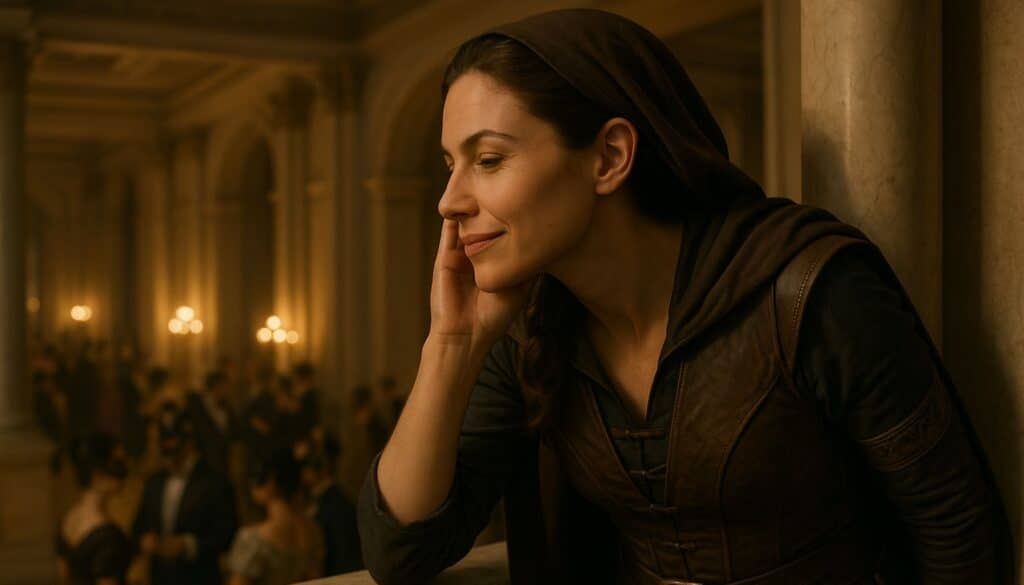
Narrative Roles for Rogues Beyond Combat
- Political fixer mediating between warring factions and brokering alliances with leverage, not violence
- Reluctant hero haunted by childhood failures, striving for redemption through acts of courage
- Secret diplomat handling emissary duties in foreign courts with charm and subterfuge, not open aggression
- Double-agent playing both sides in a greater conspiracy, motivated by loyalty to an unwitting ally
- Moral compass steering the party away from cruelty or corruption, despite a checkered past
- Redemption seeker working to right old wrongs, never fully trusted by the group
- Undercover investigator rooting out criminal syndicates from within, risking exposure at every turn
- Masked vigilante protecting the powerless, hiding identity even from friends
- Trusted informant gathering intelligence for the group; truth, not gold, is the true prize
- Disgraced noble using underworld connections to reclaim family honor
- Ex-guildmember hunted by former partners, who now aids the law
- Propagandist quietly steering public opinion with rumors and misinformation
- Grieving parent driven by the loss of a child, seeking either vengeance or forgiveness
- Heir in hiding, protecting kin through anonymity and wit
- Spy-master training and coordinating lesser agents for a greater cause
- Pacifist saboteur using skills to disable war engines or destabilize tyrannies without killing
- Secret-keeper, the only one who knows the true threat facing the realm
In campaigns that make space for Rogue-driven stories, every player benefits. Plots thicken, trust is tested, and success rarely comes without risk. Rogues are built to embody inner conflict, shifting loyalties, personal quests, and emotional fallout. Their mere presence promises that nothing remains predictable, and no path to victory will ever be straight or simple.
The Rogue, when harnessed as a multidimensional character, transforms a campaign’s tone, stakes, and trajectory. Handled well, they challenge not only monsters and puzzles, but the very soul of the party. DMs and players who lean into this potential can craft stories that linger long after the dice have stopped rolling.
The Versatile Role of Rogues in Gameplay
When swords clashed and spells blazed, players often lost sight of the slippery ways Rogues dominated scenarios beyond the battlefield. Rogues moved between worlds with ease; one moment cajoling a guard, the next prying open a vault or orchestrating the party’s escape from a burning palace. The very structure of the class rewarded flexibility and adaptation, survival as much by wit as by the blade.
Even in the thick of combat, Rogues upended expectations. While some classes relied on brute force, Rogues manipulated terrain, ambushed enemies with uncanny timing, and exploited openings with surgical precision. Their battlefield control, though subtle, often turned the tide in ways more overt classes never could. The game’s most memorable victories sometimes belonged not to the strong, but to the clever.
Yet the Rogue’s true glory shone during social encounters and exploration. DMs who gave Rogues space to parley, negotiate, or infiltrate unlocked entire layers of game that otherwise slumbered beneath the surface. The only limit was imagination! What if the Rogue sweet-talked a prison warden, planted evidence to frame a corrupt lord, led the group through shifting streets on a full-moon night? Every skill, every ability, whispered of opportunity if only the table could hear it.
Try my AI Tabletop RPG generators...and an extensive library of content!
Puzzles and traps, too, begged for a deft hand. The world’s dangers weren’t always monsters; sometimes, they were locks, riddles, shifting walls, or ancient glyphs. Rogues became the thread stitching together party survival, untying knots with brains instead of brawn. Where others saw danger, Rogues found possibility, cutting through chaos with focus and flair.
Unconventional Roles Rogues Excel In
- Mediating peace talks where both sides suspect trickery
- Disguising party members to elude magical surveillance
- Negotiating ransoms or prisoner exchanges with criminal underworld bosses
- Leading night-time infiltration into enemy headquarters from rooftops
- Operating as battlefield commander, analyzing enemy tactics and countering ambushes
- Crafting elaborate heists to retrieve lost relics without triggering magical alarms
- Posing as bodyguards or liaisons in noble courts to gather intelligence
- Mastering urban or wilderness navigation to bypass patrols or natural hazards
- Coordinating prison breaks where brute strength would only doom the attempt
- Running sabotage operations on enemy supply lines or war machines
- Unraveling political conspiracies by piecing together clues hidden in coded documents
- Serving as intermediary during tense hostage situations
- Forging documents, seals, or signatures to infiltrate otherwise inaccessible locations
Rogues, when leaned into, transform parties from blunt instruments into flexible, multi-dimensional forces. Rather than relegating them to “trap detector” or “theft consultant,” smart play sees Rogues as diplomatic envoys, tactical masterminds, agents of change. Their presence challenges the party to imagine new solutions and rewards creativity at every turn.
Parties thriving on diversity and unpredictability flourish where Rogues are unleashed from old constraints. Strategic depth grows; player engagement soars. When the D&D table embraces the sum of Rival’s skills, every scenario expands, and adventures become more memorable for it.
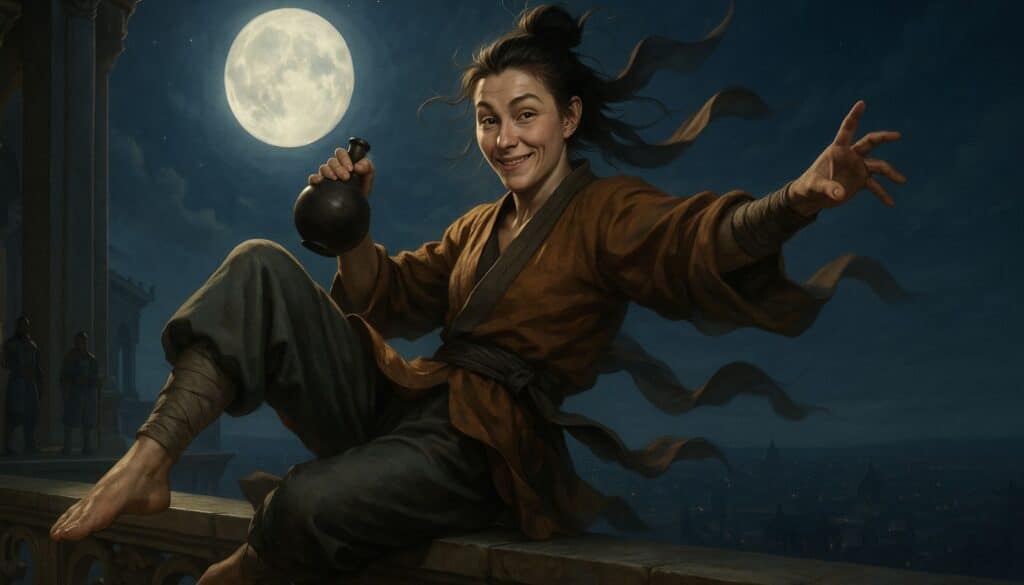
Reframing Morality: Rogues Beyond Alignment Constraints
Most players reach for the same brush when painting their Rogues, a palette of chaos, gray morality, and opportunism. Yet the spectrum of Rogue alignments shimmers with undiscovered stories, each hue representing a radical new direction in motivation, ethics, and behavior. In this reframing, alignment becomes a tool for narrative, not a cage.
Imagine the Lawful Good Rogue standing as an incorruptible detective, rooting out corruption not for reward, but from an unshakable sense of justice. Or a Neutral Good spy risking everything to shelter innocents caught in the crossfire of political wars. A Lawful Neutral agent moves through bureaucratic labyrinths, bringing order from within instead of tearing society apart. What happens when the Rogue’s faith in the law surpasses even that of the local magistrate, or when kindness, not greed, propels stealth and subterfuge?
Often, a strict adherence to the alignment stereotype limits both player agency and depth of storytelling. Characters shaped to fit a moral straitjacket lack the tension and unpredictability that make Rogues so compelling. Letting Rogues slip into any alignment transforms every component of play: goals, relationships, decisions, and party dynamics.
True narrative richness emerges when alignments are molded around motive, not stereotype. The Rogue can choose loyalty, mercy, or rebellion. They might take up arms for peace, infiltrate criminal syndicates out of compassion, or defy orders out of rigid devotion to personal codes. The result is a character of paradox and intrigue, one whose true nature never rests comfortably in any box.
Unique Rogue Alignments and Corresponding Character Concepts
- Lawful Good Rogue detective uprooting criminal networks by obeying and reforming the law
- Neutral Good rebel courier smuggling medicines to plague victims under martial law
- Lawful Neutral tax collector enforcing regulations while exposing corrupt officials
- Lawful Evil inquisitor manipulating bureaucracy for personal gain while presenting a lawful front
- Neutral Evil saboteur undermining regents in exchange for blackmail, flipping sides as needed
- Chaotic Good trickster driven by whimsy but always defending the powerless
- Chaotic Neutral wanderer whose only commitment is to freedom and experience, causing change in their wake
- Chaotic Evil vandal using stealth to sow upheaval and chaos among the establishment
- Lawful Good palace scribe secretly gathering evidence against tyrannical leaders for honest judges
- True Neutral peacekeeper mediating disputes in the underworld, maintaining balance above all else
- Lawful Neutral customs inspector rooting out smugglers and criminals within her city
- Neutral Good informant seeking clemency for impoverished thieves, using stealth for good
- Lawful Evil enforcer maintaining guild discipline with iron rules and zero mercy
- Chaotic Good street performer using magic and agility to entertain and secretly protect urchins
- Chaotic Evil burglar orchestrating arson to break a city’s spirit for a rival lord
- True Neutral academic obsessed with hidden knowledge, loyal only to the pursuit of truth
Where alignment is a springboard, not a straightjacket, Rogue stories break out of the expected rut. They become stories of faith, justice, selfishness, discipline, and hope, each more compelling for the surprise. DMs and players need only ask, “What does my Rogue truly value?” and alignment can serve, not impede, storytelling magic.
The more fluid the relationship with alignment, the more deeply the Rogue class can explore the limits and contradictions of human motivation. Such characters live not in the pages of the Monster Manual, but in the spotlight of the greatest adventures.
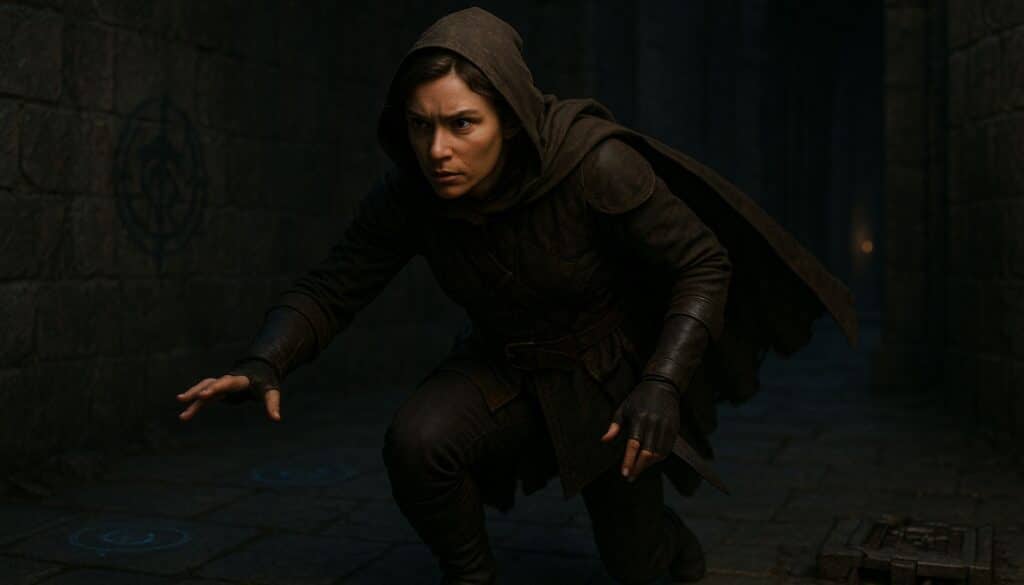
Role-Playing Complex Rogues
In the hidden places between dice rolls and stat sheets, Rogues become most alive. Their complexity is not an accident of mechanics, but a mandate for storytelling depth; a character built for internal turmoil and transformation. The class’s native flexibility mirrors the ways real people wrestle with impulse, memory, and hope.
Layered, compelling Rogues demand more from their players than mere skill checks. The best stories stem from characters who carry secrets, face shame, or chase redemption. For every thief longing for absolution, there exists a grifter haunted by a vanished family, an Assassin tormented by the blood staining each hand, or an Arcane Trickster exiled from academic circles for forbidden knowledge.
Motivations can shift from gold to honor, revenge to forgiveness, or survival to sacrifice. The tools of the Rogue map naturally onto stories of identity: Who is this character, really? Where have they come from? What do they fear, love, or regret? Rogues move through life by adaptation, driven always by a need to prove, atone, or escape.
Masterful role-playing means embracing not just mechanical opportunity, but psychological and emotional risk. Growth often comes from pain: the ex-guild thief who defies her old crew; the Assassin who cannot wash away the memory of a child’s tears; the Trickster who wonders if laughter can mend the wounds left by lies. Conflict and doubt become fodder for growth, not obstacles to be sidestepped.
Complex Rogue Character Arcs
- The Assassin bound by an oath to never kill again, risking everything to redeem a blood-soaked past
- The Thief facing trial, where old victims demand justice and the party must defend or condemn
- Guild runaway forced to lead their former allies against a common threat, testing loyalty anew
- Mastermind cut off from old contacts, learning humility, and forging true friendship for the first time
- The Arcane Trickster cursed by forbidden magic, struggling to reclaim agency or forgive a mentor’s betrayal
- Swashbuckler rejected by nobility, embracing peasantry and fighting for justice
- Former street urchin who steals for survival, then discovers the value of generosity and belonging
- Phantom haunted by the spirit of a slain enemy, seeking forgiveness from both worlds
- Grifter falling in love with the target of a long-con, torn between loyalty and profit
- Paladin-Rogue hybrid torn by code of conduct, choosing between holy vows and criminal skills
- Ex-assassin pressured to return for one last job, endangering a newfound family
- Rogue betrayed by a lover, struggling to trust again
- Trickster posing as villain to draw attention from the true threat, risking reputation and life
- Spy with nowhere to belong, always on the brink of exposure but gradually finding a place to call home
- Liar who crafts a new identity after a kingdom’s fall, torn by guilt and duty
When campaigns give Rogues space for such stories, the experience becomes electric. Party dynamics shift, bonds deepen, and every triumph or failure feels real. Players, drawn into a Rogue’s journey, commit more wholly to story, finding joy in every twist and heartbreak in every loss.
Rogues well-played bridge the gap between head and heart. The campaign table, once focused on monsters and gold, increasingly revolves around the choices and consequences shaped by their depth.
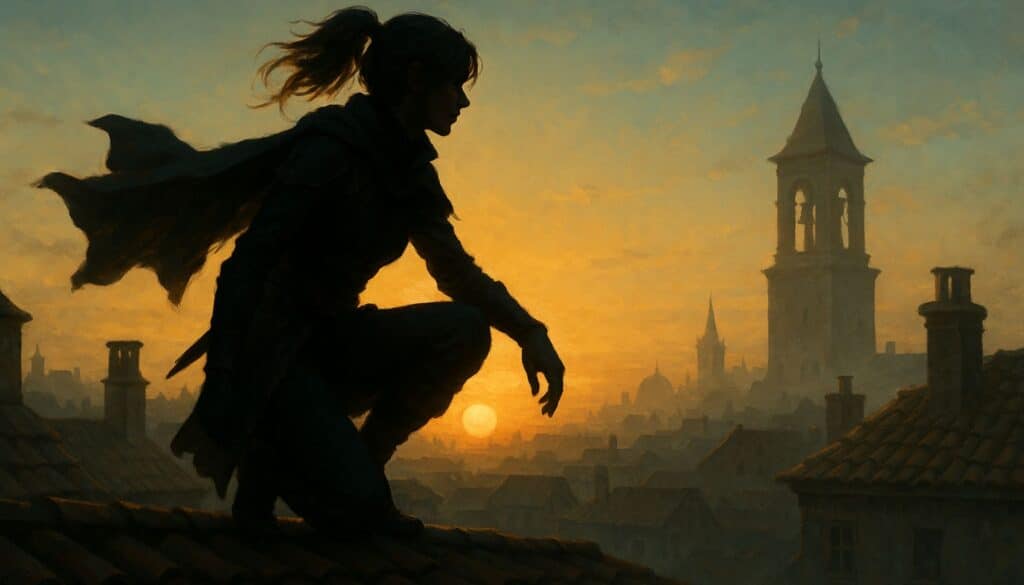
Integrating Rogues Seamlessly Into Campaigns
Dungeon Masters can unlock the true potential of Rogues by crafting stories that champion their skills and dimension, not just rehash the “heist of the week.” Integration demands more than a few locked doors or convenient secrets. Successful campaigns weave Rogue abilities into the tapestry of plot and party dynamics, ensuring every move, scheme, or confession has meaning.
⚔️ Fantasy RPG Random Tables Books
Make life as a Gamemaster easier…
If you play Dungeons & Dragons, Pathfinder, or other fantasy RPGs, this
RPG random tables series
is packed with encounters, NPCs, treasure, and more. Available in eBook or print—either way, you’ll have a wealth of adventure ideas at your fingertips.
First, structure challenges to require creative, multi-stage solutions: negotiation, infiltration, problem-solving, teamwork. This prevents Rogues from dominating or fading into irrelevance. Instead, each skill becomes a spotlight, from breaking obscure codes to brokering back-alley deals that force moral quandaries. DMs benefit from foregrounding the consequences of Rogue choices, success and failure alike should ripple through the campaign world, sparking new connections and dangers.
Opportunities for role-play are as vital as mechanical tasks. Provide Rogue players with dilemmas only they can resolve: a guild war needs inside knowledge to quell; the city’s safety depends on outwitting a rival mastermind; a party member’s fate hangs on evidence the Rogue alone can procure. These moments generate tension and agency, making the class indispensable to the group’s greater good.
Finally, always anchor Rogue story arcs to party goals. Integrate personal quests so that they align with or complicate the campaign’s main quest. This increases investment for everyone: every character becomes necessary and the story hums with interwoven destinies.
Scenarios for Rogue Integration Table
| Scenario | Recommended Rogue Subtype | Potential Narrative Impact | Integration with Party Goals |
|---|---|---|---|
| Noble’s masquerade ball heist | Arcane Trickster | Exposes corrupt noble, secures necessary artifact | Infiltration mission, gather intel |
| Assassination plot on party’s patron | Assassin | Prevents murder, uncovers conspiracy | Mutual trust, save key ally |
| Deciphering coded messages between guilds | Mastermind | Unmasks traitors, steers faction politics | Protects city, advances group’s alliance |
| Navigating haunted ruins for lost treasure | Phantom | Reconnects with ancestor spirits, solves mystery | Forges alliances with local tribes |
| Leading a prison break to free an innocent | Thief | Challenges corrupt system | Moral debate, increases party reputation |
| Wilderness sabotage of enemy supply lines | Scout | Turns the tide in regional war | Assists local militia, direct payoff |
| Orchestrating a diplomatic coup | Mastermind | Reshapes city leadership | Peaceful solution to looming war |
| Disabling magical wards in wizard’s tower | Arcane Trickster | Prevents magical disaster | Prevents wider consequences |
| Exposing smuggling ring in city harbor | Inquisitive | Reduces crime, wins favor with authorities | More funds, access to underground world |
| Uniting rival thieves’ guilds for common cause | Soulknife | Ends destructive turf war | Secures future resources, local stability |
| Interpreting ghostly clues at murder scene | Phantom | Solves cold case, brings peace to victims | Earns city’s gratitude, prevents unrest |
| Sabotaging ritual to prevent planar invasion | Arcane Trickster | Blocks major existential threat | Saves campaign setting |
Integrating Rogues is not about creating obstacles just for them, but elevating their importance by making challenges richer and party success more collaborative. Good DMs share the spotlight, weaving each character’s strengths into world-shifting moments.
A thoughtfully integrated Rogue morphs the party from a mere collection of adventurers into a dynamic, evolving troupe whose bonds withstand betrayal and tragedy. Over time, the group’s story will rest on the shoulders of that once-maligned class, now the lifeblood of the tale.
Rogue Synergies With Other Classes
True D&D brilliance shines through in teamwork, and Rogues often power the party’s most inventive collaborations. Coordination with other classes produces tactical gold, blending disparate strengths into plans no monster, lord, or puzzle can withstand.
With spellcasters, Rogues enable quick, surgical strikes: a wizard distracts with illusions while the Rogue slips past defenses, retrieves a lost scroll, or silences the enemy’s mage before a spell erupts. With bards, Rogues concoct deceptions and feints, swaying city councils or outmaneuvering rival guilds in courtly intrigue. Paladins serve as both nemesis and conscience, refusing to let Rogues ignore consequences while trusting them for intelligence gathering and battlefield strategy.
With rangers and druids, Rogues expand the party’s reach, no trail too faint, no hideout too well-concealed. Fighters benefit from Rogue tactics, setting up devastating Combo attacks and relay-strikes that overwhelm even legendary foes. Clerics, often called on to heal wounds or mend reputations, discover powerful partners in Rogues when confronting moral impasses or rooting out hidden threats.
Synergy takes many forms: shared trust, mutual respect, calculated risk. The fragile trust between a paladin and a reformed thief; the crackling chemistry of a bard enticing a mark while the Rogue delivers the clinching blow; or the scholar-mage and Arcane Trickster debating magical theory while disabling lethal wards. These bonds elevate both gameplay and narrative, transcending the rift of old stereotypes.
Effective Rogue Synergy Examples
- Bard and Rogue executing a rolling con at royal court, blending charm and misdirection to oust a tyrant
- Rogue scouting ahead, then relaying tactical intel to a Ranger for a coordinated ambush
- Paladin and Rogue negotiating an uneasy alliance, using legal clout and street contacts to reform city laws
- Rogue and Cleric combating a vampiric cult, blending stealth and holy magic to reclaim abducted villagers
- Rogue and Druid outpacing patrols in dense forests, blending animal forms and disguise for seamless infiltration
- Fighter distracting a warlord’s guard while Rogue disables defenses for a surprise strike
- Sorcerer cloaking Rogue in invisibility for a sabotage mission within an enemy fortress
- Wizard and Arcane Trickster combining spellcraft to thwart magical traps and illusions
- Barbarian creating chaos in a town square while Rogue extracts the governor’s ledger from under the nose of guards
- Monk and Rogue using acrobatics to bypass fortress walls, then splitting roles for swift, silent takedown
- Rogue and Warlock striking bargains with extraplanar creatures as part of a larger, layered plot
- Rogue and Artificer inventing ingenious gadgets and traps for both offense and defense in high-stakes situations
- Rogue and Inquisitive drumming up revolutionary sentiment in a city by combining investigative work and rumor-spreading
When parties lean into trust and collaboration, Rogues blossom. Their gifts become vital contributions, not liabilities, and the group moves from mere survival to genuine mastery of their world. Over time, the stories told remember not the chaos, but the wit and heart Rogues brought to the party and the game.
An integrated Rogue does for the narrative what a lynchpin does for a machine: everything turns smoother, with more power, and the journey becomes more than the sum of its parts. In these moments, the old trope of the “loner” thief dissolves, replaced by something richer, stranger, and infinitely more rewarding.
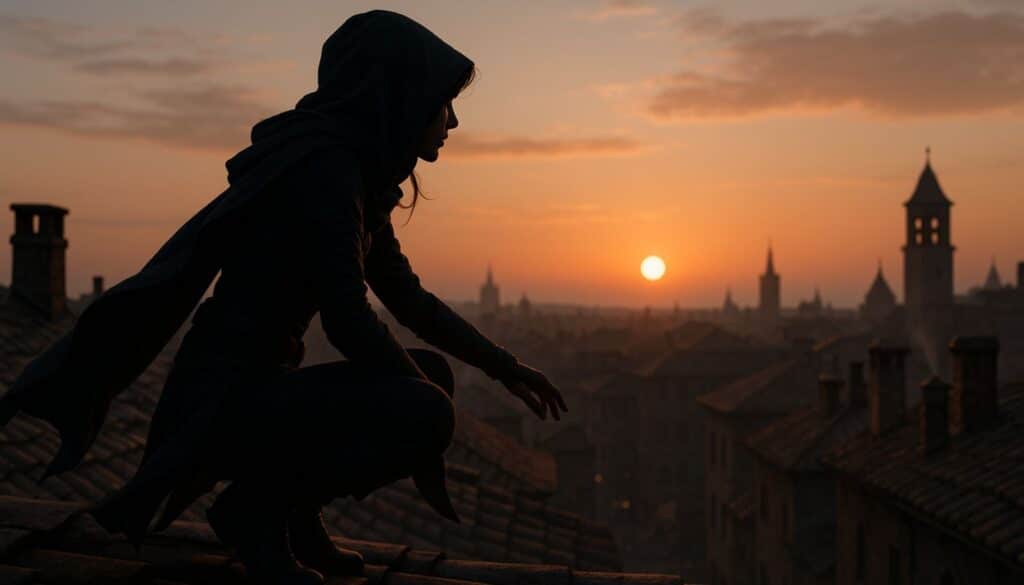
Rogues in Action: Stories from the Table
Campaign tales flicker with memories of Rogues, often where nobody expected them to shine. One group remembers the time their Mastermind outwitted an entire guild war, no blood spilled, just secrets traded like currency in the city’s back alleys. Another table laughs over how an Arcane Trickster posed as a noble’s ghost to terrify a corrupt magistrate into confessing his crimes. When leveraged for both mechanics and narrative, the Rogue became a storm at the center of every adventure.
A party near collapse was saved not by healing or divine magic, but by the split-second reflex of a Scout who lured a dragon out of its lair just long enough for the others to regroup. In campaigns across the world, Rogues struck bargains with angels, outwitted fiends, and left rulers reeling from political coups made possible by careful investigation and subtle manipulation.
These stories vibrate with unpredictability. The greatest heist failed not from a botched lockpick, but from the Rogue’s old flame arriving as chief of the city guard. Another group watched their Phantom Rogue parlay with the ghost of a murdered queen, learning critical secrets other classes might never have coaxed from the silence of the grave. Every session blazed with surprise, laughter when a con succeeded, silence when a betrayal came home to roost, catharsis when the Rogue finally found peace.
It is the intersection of wit, luck, and layered motivation that marks these moments unforgettable. Parties fight, mend, and evolve around the Rogue’s choices, their own arcs deepened by the fallout and redemption that follows each shadow.
Rogue Anecdotes Table
| Scenario | Surprising Rogue Action | Outcome | Key Takeaway for Characterization |
|---|---|---|---|
| Rival Thieves’ Guild war | Brokered nonviolent truce with rival guild | Ended bloodshed, united city under new pact | Conflict resolved through strategy, not violence |
| Haunted mansion investigation | Phantom spoke directly to vengeful ghost | Gained critical intel to solve murder | Uncovered resource unique to rogue archetype |
| Noble’s masquerade ball | Disguised party as servants via deception | Secured the artifact, escaped unnoticed | Rogue skills create unique infiltration paths |
| Ambush by city guards | Created distraction to let party escape | Party avoided arrest, grew to trust Rogue more | Sacrifice and initiative deepen trust |
| Cursed artifact in mage’s tower | Arcane Trickster used illusion to fool golems | Bypassed security, kept party safe | Illusions can resolve, not just avoid, conflict |
| Dragon’s lair defense | Scout lured dragon away with fake treasure | Party regrouped, later triumphed | Creative use of environment saves the party |
| Political coup in occupied city | Mastermind funneled rumors to ignite rebellion | Regime collapsed, peace brokered | Rogues reshape power dynamics with information |
| Betrayal by ex-guild lover | Refused to flee, confessed past to party | Catalyzed reconciliation, new alliances formed | Vulnerability yields emotional payoff |
| Assassination contract gone wrong | Chose not to fulfill contract on conscience | Spared target, convinced employer to relent | Morality trumps stereotype |
| Escaping planar prison | Soulknife manipulated psychic locks | Facilitated multi-party escape | Unique powers solve intractable problems |
| Ancient puzzle in ruined crypt | Inquisitive cracked secret code | Won artifact before rival adventurers | Intelligence as weapon, not just brawn |
| Wild chase through city rooftops | Swashbuckler leveraged crowd as cover | Evaded pursuers, saved kidnapped NPC | Urban environments magnify Rogue talents |
Every Rogue-driven story is a microcosm of what the class can be: unexpected, intense, moving, and complex. Table memories accrue not just around kills or skill checks, but around choices, emotion, and the collective gasp when something utterly unplanned rewrites the campaign’s fate.
A party willing to give Rogues narrative ownership will find themselves in the heart of stories that provoke laughter, tears, and awe. Rogues become not a liability, but a wellspring of campaign-defining moments.
Final Thoughts: Embracing the Rogue’s True Potential
As the dice stop clattering and the campaign’s threads twine ever tighter, the Rogue stands revealed as D&D’s most mutable, misunderstood, and magnificent class. Far from caricature, the Rogue embodies all the tension and transformation possible in role-playing games, every risk, every redemption, every quiet twist of fate. They are not only the shadow in the corner, but the light that complicates, forges, and sometimes saves entire worlds.
For too long, legacy and pop culture allowed simplicity to masquerade as truth. Rogues as thieves, as betrayers, as comic relief, those tropes have been worn to tatters, unfit for the stories that drive tables wild with suspense and joy. Every roll of the die is a reminder that this class can be more: leader, lover, martyr, monster, or hope reborn.
Try my AI Tabletop RPG generators...and an extensive library of content!
It falls now to players and DMs alike to lean into possibility, to use each archetype and every skill as a tool for invention. Treat the class as the engine for intrigue, the forge of feeling, the wild card that turns flat modules electric. Layer motivation and identity; test loyalty; embrace the wonder and risk at the heart of every great campaign.
From the alleys of Waterdeep to the blasted plains of Avernus, Rogues remain forever poised on the edge; ready to fall, ready to soar. Behind every whispered secret, every near-silent step, there is a heart beating for more than gold.
⚔️ Fantasy RPG Random Tables Books
Make life as a Gamemaster easier…
If you play Dungeons & Dragons, Pathfinder, or other fantasy RPGs, this
RPG random tables series
is packed with encounters, NPCs, treasure, and more. Available in eBook or print—either way, you’ll have a wealth of adventure ideas at your fingertips.
The next time you sit at the table, leave the old roles at the door. Open yourself to stories of courage, complexity, and profound connection. In the hands of a thoughtful player or an inspired DM, the Rogue becomes not just a class, but a force, transforming every adventure from the expected to something unforgettable.

